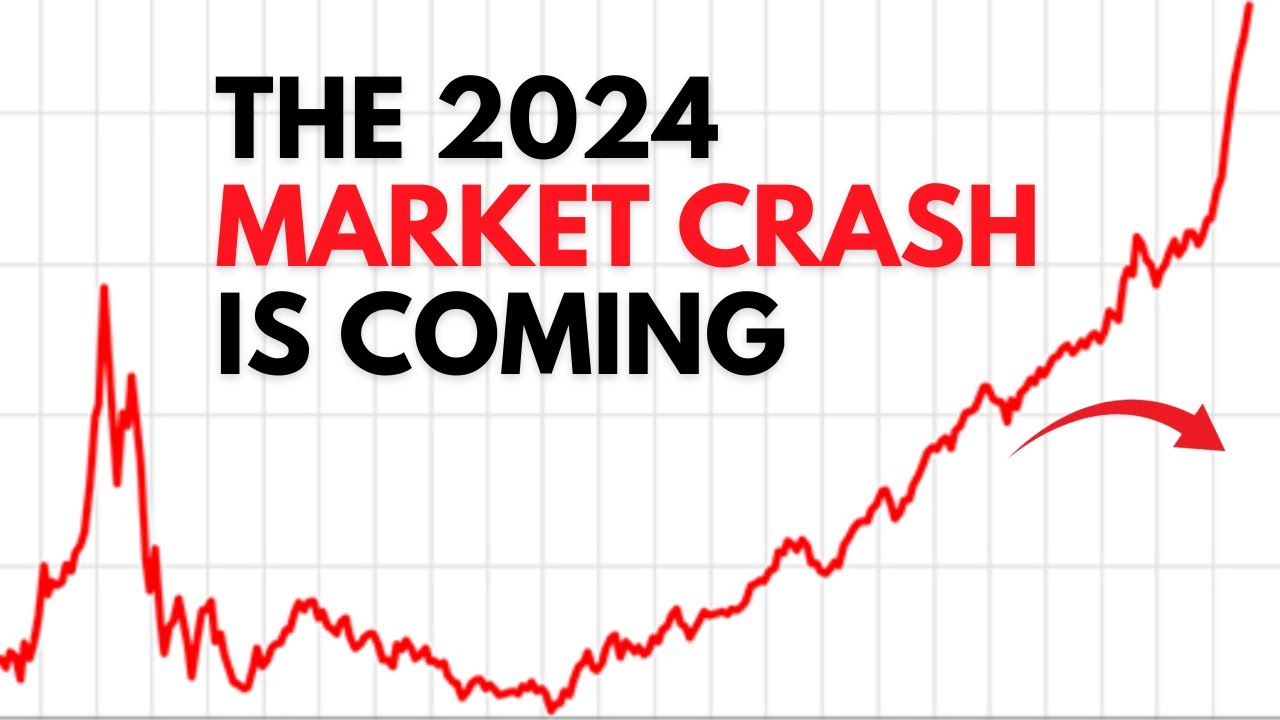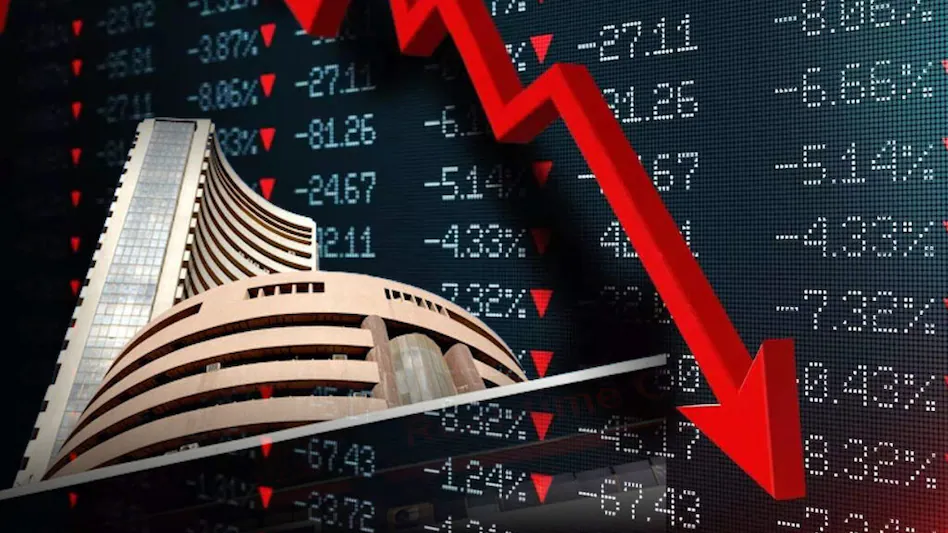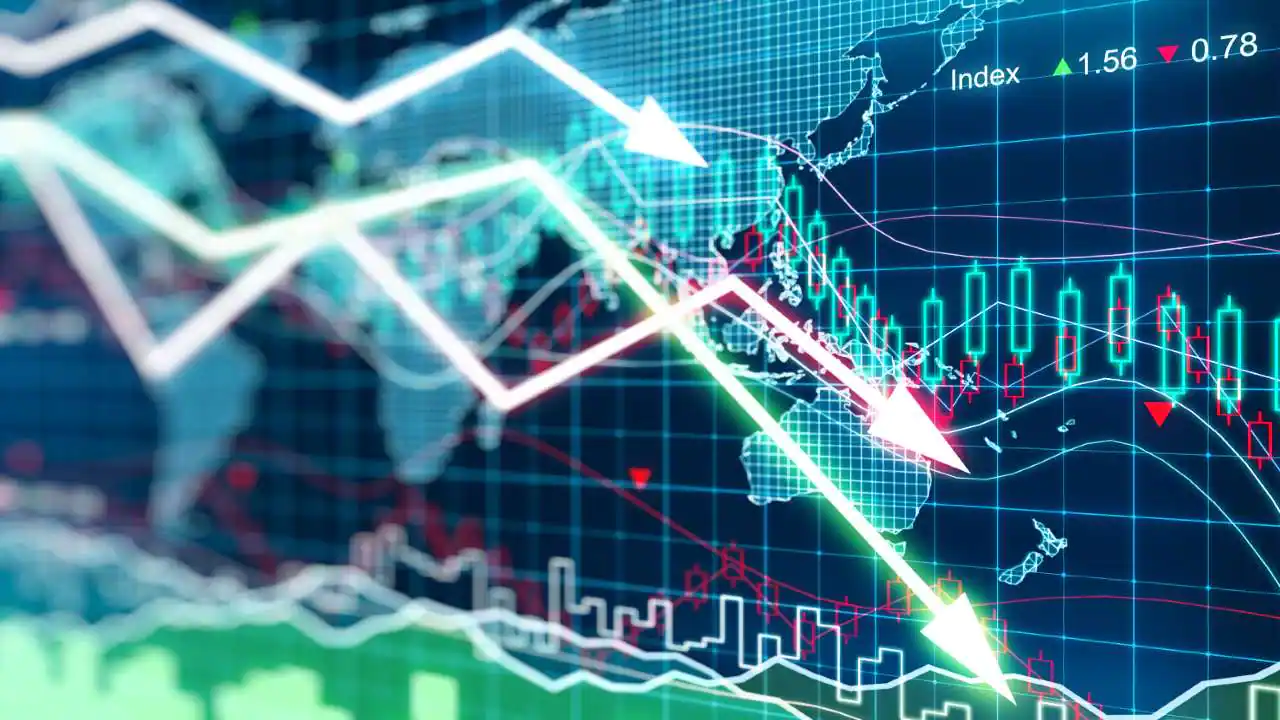Signs of a stock market crash can sneak up on even the savviest investors, casting shadows of doubt on the stability of your financial future. With your hard-earneds at stake, knowing the warning flags can mean the difference between safeguarding your wealth and watching it vanish. It’s crucial to spot these signs early. Overinflated stock valuations and erratic market volatility indexes are just the beginning. Economic red flags, like the oft-dreaded inverted yield curve, add to the mix, signaling potential peril. Beyond cold hard data, the mood and moves of investors play a significant role. Are they jittery or too confident? Finally, we can’t ignore the external pressures—from central bank maneuvers to sector shake-ups. Let’s dive deep to ensure your investments aren’t on a collision course with an unseen financial iceberg.
Recognizing Market Volatility and Overvaluation
Identifying Extreme Stock Valuations
Stocks can reach prices that are too high. This is when we talk about high valuation ratios. A high price-to-earnings (P/E) ratio often means a stock is overvalued. It shows that people are paying a lot for the company’s earnings. We compare the current P/E to historical averages. If it’s much higher, it might mean the stock’s price is too high.
Understanding Market Volatility Indexes
A tool called the VIX index helps us see market fear. It shows how much prices move up and down. When the VIX is high, it means prices swing a lot. This can be a sign that investors are nervous. Big price swings can mean a market downturn is coming. Watching the VIX can help you prepare for rough times in the stock market.
Economic Indicators Hinting Trouble Ahead
The Significance of an Inverted Yield Curve
Let’s talk straight: an inverted yield curve is no small thing. It happens when short-term debts pay more than long-term. This sounds weird, right? Normally, we want more money for lending longer. When this flips, it’s like a big blinking light saying, “Warning! Trouble might be coming!” This curve has been right before every recession since the 1950s. So, it’s like a crystal ball warning us of a crash.
The curve isn’t magic, though. It shows how folks feel about the future. If they are scared, they want safer long-term bets, which drives short-term rates up. To spot this, look for news on treasury bonds. This curve can be an early call to rethink where your cash sits. Not all curves mean a crash, but it’s smart to keep an eye out.
Rising Interest Rates and the GDP Growth Slowdown
Now, let’s unpack more signs of trouble. One big one is when interest rates climb up. Higher rates make borrowing costly. This can cool down things when an economy gets too hot. But, if rates go up too fast or too high, people stop spending. This can hit businesses and slow down the whole economy. A slower GDP growth rate shows this in action. It’s the scoreboard of how well the country is doing, money-wise.
When the GDP growth goes down, it hints that folks aren’t buying as much. They might be saving more, worried about tomorrow. And if we see this happening, it might mean hard times are near. Rates often rise to stop inflation, which is when stuff costs more. It’s a tricky dance. Too high inflation or rates can lead to a market downturn. So, it’s smart to know what the Federal Reserve says about rates.
In short, watch the yield curve and rate hikes. They show us economic health – or sickness. Understanding these can help you protect your money. And remember, while history doesn’t repeat, it often rhymes. Knowing these signs, you’re set to make better choices for your investments.
Analyzing Investor Behavior and Market Dynamics
The Impact of Investor Sentiment on Markets
How people feel about the stock market affects it a lot. This “investor sentiment” can push prices up or down, not just cold, hard facts. When folks get scared, they may sell stocks fast. That’s a sign we could be heading for a drop.
Think of it like the mood at a party. When the mood is good, the party rocks. But if the mood sours, people head for the doors. The stock market is like that. When the vibe turns fearful, watch out. It could mean a crash is on the way. It’s like the market’s way of telling us the party might end badly.
Watch what investors do, not just what they say. If they start selling lots of shares, they might know something’s up. When people are too sure that stocks will always go up, that’s also risky. That’s called “market speculation.” It means prices could be too high. And what goes up must come down. That’s the hard truth.
Market sentiment indicators let us peek into the mood of investors. They show us if people are too worried or too confident. Think of it like a weather forecast for stocks. It helps us pack an umbrella if a storm’s coming. You want to be ready for rain or shine.
Trading Volumes and Liquidity as Warning Signs
Let’s talk about “trading volumes” and “liquidity.” These are big words, but the ideas are simple. Trading volume is just how many stocks are being bought or sold. Liquidity is about how easy you can buy or sell without moving the price too much.
When lots of stocks are trading, that’s high volume. That can be good or show trouble ahead. If there’s too much trading with no real reason, watch out! It might point to a “liquidity crisis.” That’s like when water dries up in a river. Suddenly, there’s no easy way to move around.
Now think about when water moves too quickly in a river. That’s like when stocks are being sold fast. It can lead to a big fall in prices. That happened before the big crashes in history. When you see this, it’s like the market saying the bridge could collapse.
If people can’t sell without prices dropping hard, we call that “credit tightening.” It’s like when money gets hard to borrow. As credit tightens, interest rates may also rise. That makes it more costly to get loans. It can slow down the whole economy and hurt stocks.
A healthy market needs a balance. Too much or too little trading can be bad. It’s like Goldilocks and the three bears. Not too hot, not too cold, but just right is what we want for a happy stock market.
Pay attention to these signs. They could save your investments from a bad end. Just like you’d keep an eye on road signs to avoid trouble ahead.
Tracking these signs is kind of like being a detective. It’s about seeing clues before they become problems. Stay alert and you might just spot the signs of a market crash. And saving your investments? Well, that’s just like saving your seat on the lifeboat of the Titanic.
The Role of External Factors in Market Health
Central Bank Policies and Government Debt
Let’s dive into how big decisions and big money can sway our market. Central Banks make the rules about money’s cost. Their policies can make lenders happy or tighten their grips. When they hike interest rates, loans cost more. Businesses might then put the brakes on expansion and hiring, causing ripples of worry throughout the stock market. And if you’ve been keeping an eye on the news, you know rates are climbing.
Now, let’s talk about government debt. It’s like a balloon that keeps swelling if not managed. If this debt gets too big, it can burst, hurting our market. More debt means the government may need more cash, sometimes from our pockets. It can lead to less spending on big projects that help keep jobs flowing and businesses booming.
Both central bank moves and government debt can make investors unsure. They might start to sell their stocks, leading to prices plunging. That’s a sign that rough times could be coming for stocks.
Sector Performance and Corporate Earnings Reports
Every industry in the market acts like a puzzle piece. When pieces fit well, the market picture looks good. But if one starts to wiggle free, it can mess up the whole thing. Each sector has its own tale of success or woes. Let’s say tech stocks are dropping because new gadgets aren’t selling well. That pull can drag other sectors down too.
Corporate earnings reports are big report cards for companies. If a report shows less cash coming in than hoped, it means trouble. Investors look at these reports closely. If they see bad results, they might sell their stocks quick. And if lots of investors start selling, stock prices can nose-dive fast.
Money folks call that a market correction when it’s mild. But if it’s deep and spreads wide, it could spell total mayhem for the stock market. Think of it as a strong wind that can turn into a storm, shaking all our investments.
Keep an eye on how different parts of the market hop along. It’s tricky, but knowing these signs can help us brace for any crashes. And in the end, staying alert and informed is your best move to protect your investments.
In this post, we’ve tackled key signs to spot market risks. We talked about spotting if stocks are priced too high and what market volatility indexes tell us. We’ve also looked at economic red flags like strange yield curves and rising rates paired with slow growth. Then, we examined investor mood swings and how trading and cash flow hint at trouble. Lastly, we explored how big players like central banks and government debt sway markets, and why some business sectors and company earnings matter.
Remember, being smart about where your money’s at means keeping an eye on these signs. Markets shift, but with this knowledge, you can stay ready and react wisely. Stay sharp and keep learning. Your financial health depends on it.
Q&A :
What Are Common Indicators of a Potential Stock Market Crash?
Frequent market volatility, significant drops in stock indexes, and rapid shifts in investor sentiment can serve as common indicators. Other warning signs include exceedingly high market valuations compared to historical averages, rising interest rates, overleveraging among consumers and businesses, and a deceleration in economic activity or downturns in economic indicators such as GDP growth, unemployment rates, and manufacturing data.
How Can Investors Prepare for a Stock Market Crash?
Investors might consider diversifying their portfolios across various asset classes to mitigate risk. They may also focus on quality investments with sound fundamentals, increase their cash holdings to take advantage of post-crash opportunities, and establish stop-loss orders to limit potential losses. Staying informed about market trends and economic factors is essential for making educated investment decisions during volatile periods.
Do Economic Recessions Always Follow Stock Market Crashes?
While stock market crashes can sometimes lead to, or co-occur with, economic recessions, they do not always result in a recession. A stock market crash can reflect investor sentiment and market speculation rather than underlying economic issues. However, if a crash undermines consumer and business confidence significantly, it can contribute to a recession.
What Historical Examples Help to Understand Stock Market Crashes?
Studying past market crashes, such as the 1929 Great Depression crash, Black Monday in 1987, the 2000 Dot-com Bubble burst, and the 2008 Financial Crisis, can provide insights into how crashes occur. Analysis of these events reveals patterns such as speculative investment bubbles, excessive use of leverage, and rapid shifts in market sentiment.
Does Investor Behavior Impact the Likelihood of a Stock Market Crash?
Investor behavior greatly impacts the likelihood and severity of a stock market crash. Factors such as herd mentality, panic selling, and speculative trading can exacerbate market declines. Conversely, informed and rational investor behavior can help stabilize markets during periods of uncertainty.




